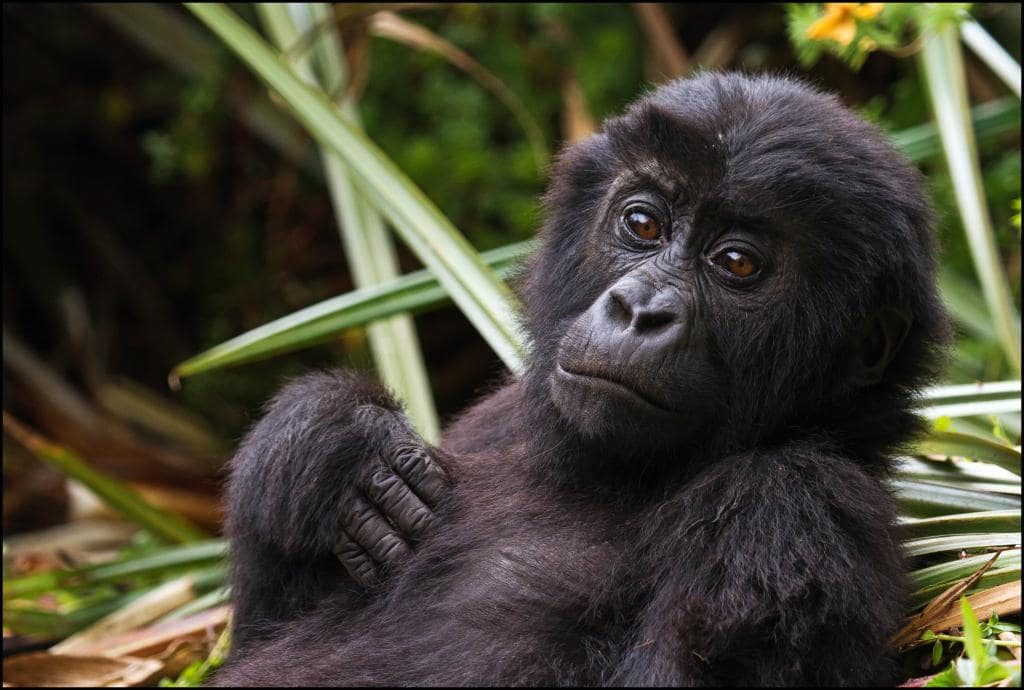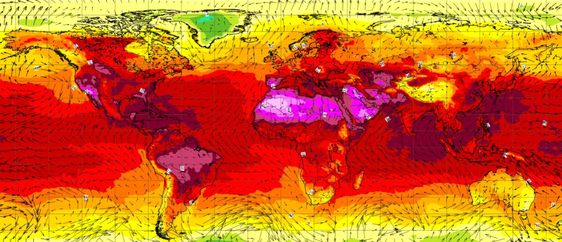

This catastrophic decline is largely due to environmental destruction (such as deforestation, unsustainable agriculture, and the illegal wildlife trade) that contributes to virus outbreaks such as COVID-19.
Tracking global wildlife trends
The thirteenth edition of WWF’s biennial flagship publication gives an overview of the state of the natural world through the Living Planet Index (LPI), which tracked almost 21,000 populations of more than 4,000 vertebrate species between 1970 and 2016.
The LPI revealed a 68% average decline in global vertebrate species populations between 1970 and 2016.
Wildlife populations found in freshwater habitats fell by 84% – the starkest average population decline in any biome, equivalent to 4% per year since 1970. A 94% decline in the LPI for the tropical subregions of the Americas is the largest fall observed in any part of the world.
Why does this matter?
It matters because biodiversity is fundamental to human life on Earth, and the evidence is unequivocal – it is being destroyed by us at a rate unprecedented in history. Since the industrial revolution, human activities have increasingly destroyed and degraded forests, grasslands, wetlands, and other important ecosystems, threatening human well-being. Seventy-five percent of the Earth’s ice-free land surface has already been significantly altered, most of the oceans are polluted, and more than 85% of the area of wetlands has been lost.
Species population trends are important because they are a measure of overall ecosystem health. Measuring biodiversity, the variety of all living things, is complex, and there is no single measure that can capture all of the changes in this web of life. Nevertheless, the vast majority of indicators show net declines over recent decades.
That’s because in the last 50 years our world has been transformed by an explosion in global trade, consumption, and human population growth, as well as an enormous move towards urbanisation. Until 1970, humanity’s Ecological Footprint was smaller than the Earth’s rate of regeneration. To feed and fuel our 21st-century lifestyles, we are overusing the Earth’s biocapacity by at least 56%.
These underlying trends are driving the unrelenting destruction of nature, with only a handful of countries retaining most of the last remaining wilderness areas. Our natural world is transforming more rapidly than ever before, and climate change is further accelerating the change.
Tigers, pandas, and polar bears are well-known species in the story of biodiversity decline, but what of the millions of tiny, or as-yet-undiscovered, species that are also under threat? What is happening to life in our soils, or in plant and insect diversity? All of these provide fundamental support for life on Earth and are showing signs of stress.
Biodiversity loss threatens food security and urgent action is needed to address the loss of the biodiversity that feeds the world. Where and how we produce food is one of the biggest human-caused threats to nature and our ecosystems, making the transformation of our global food system more important than ever.
The transformation of our economic systems is also critical. Our economies are embedded within nature, and it is only by recognising and acting on this reality that we can protect and enhance biodiversity and improve our economic prosperity.
We can estimate the value of ‘natural capital’ – the planet’s stock of renewable and non-renewable natural resources, like plants, soils, and minerals – alongside values of produced and human capital – for example, roads and skills – which together form a measure of a country’s true wealth. Data from the United Nations Environment Programme shows that, per person, our global stock of natural capital has declined by nearly 40% since the early 1990s, while produced capital has doubled and human capital has increased by 13%.
But too few of our economic and financial decision-makers know how to interpret what we are hearing, or, even worse, they choose not to tune in at all. A key problem is the mismatch between the artificial ‘economic grammar’ which drives public and private policy and ‘nature’s syntax’ which determines how the real world operates.
Together this evidence shows that biodiversity conservation is more than an ethical commitment for humanity: it is a non-negotiable and strategic investment to preserve our health, wealth, and security.
Can we reverse these trends of decline? WWF co-founded a new research initiative – the Bending the Curve Initiative – that has developed pioneering modeling, providing a ‘proof of concept’ that we can halt, and reverse, terrestrial biodiversity loss from land-use change. And the models are all telling us the same thing: that we still have an opportunity to flatten and reverse, the loss of nature if we take urgent and unprecedented conservation action and make transformational changes in the way we produce and consume food.
2020 was billed as a ‘super year’ of climate, biodiversity, and sustainable development meetings in which the international community had great plans to take the reins of the Anthropocene. The COVID-19 pandemic has meant that most of these conferences are now scheduled for 2021 and has provided a stark reminder of how nature and humans are intertwined. Until now, decades of words and warnings have not changed modern human society’s business-as-usual trajectory. Yet in times of rapid upheaval and disruption new ideas, creativity, processes, and opportunities for transformation can arise. The future is always uncertain but perhaps the COVID-19 pandemic will spur us on to embrace this unexpected opportunity and revolutionise how we take care of our home.
We still have a chance to put things right. It’s time for the world to agree on a New Deal for Nature and People, committing to stop and reverse the loss of nature by the end of this decade and build a carbon-neutral and nature-positive economy and society. This is our best safeguard for human health and livelihoods in the long term, and to ensure a safe future for our children and children’s children.
Marco Lambertini, Director General of WWF International
JRC contribution – Soil biodiversity

The report presents contributions from more than 125 experts from around the world, including JRC soil scientists Arwyn Jones and Alberto Orgiazzi.
Arwyn and Alberto report on the JRC’s research into the complexity of and threats to soil biodiversity, and the key drivers of pressures on soil organisms: climate change, land-use change, habitat fragmentation, intensive use by humans, soil organic matter decline, pollution, and invasive alien species.
This is currently carried out by analysing soil samples from across the European Union as part of the Land Use and Coverage Area frame Survey (LUCAS), in order to assess soil biodiversity, the impact of specific land uses, and the presence of pollutants.
Call for urgent action to reverse the trend by 2030
The report calls for urgent measures to reverse this trend by 2030 to avoid irreversible biodiversity loss.
This means stopping the destruction of natural habitats, particularly forests, and reforming our food system by making food production and trade more efficient and ecologically sustainable, reducing waste, and favouring healthier and more environmentally friendly diets.
Failing such urgent action, global biodiversity will continue to decline, populations will continue to fall and wildlife will be driven to extinction, which would threaten the ecosystems that we depend on for survival.
Post-2020 framework for action for global biodiversity
The Living Planet Report 2020 launches less than a week before the 75th session of the United Nations General Assembly when leaders are expected to review the progress made on the Sustainable Development Goals, the Paris Agreement, and the Convention on Biological Diversity (CBD).
The UNGA 2020 will bring together world leaders, businesses, and civil society to develop the post-2020 framework for action for global biodiversity and thus marks a milestone moment to set the groundwork for an urgently needed New Deal for Nature and People.
Let’s hope they get it right, for all our sakes.





16 Comments
Pingback: Goal 7: Affordable and Clean Energy - Bergensia
Pingback: you can try this out
Pingback: รับสร้างบ้านหาดใหญ่
Pingback: superkaya88
Pingback: who first ate mushrooms
Pingback: link
Pingback: 웹툰 사이트
Pingback: buy adderall online
Pingback: u31 เครดิตฟรี 188
Pingback: the original source
Pingback: วิเคราะห์บอลวันนี้
Pingback: cornhole
Pingback: polka dot magic mushroom reviews
Pingback: acheter phenq en ligne france
Pingback: Fake site and will take your money! Beware of uplinke.com Spam and make your site go down. Too good to be true SCAM
Pingback: เช่ารถตู้พร้อมคนขับ